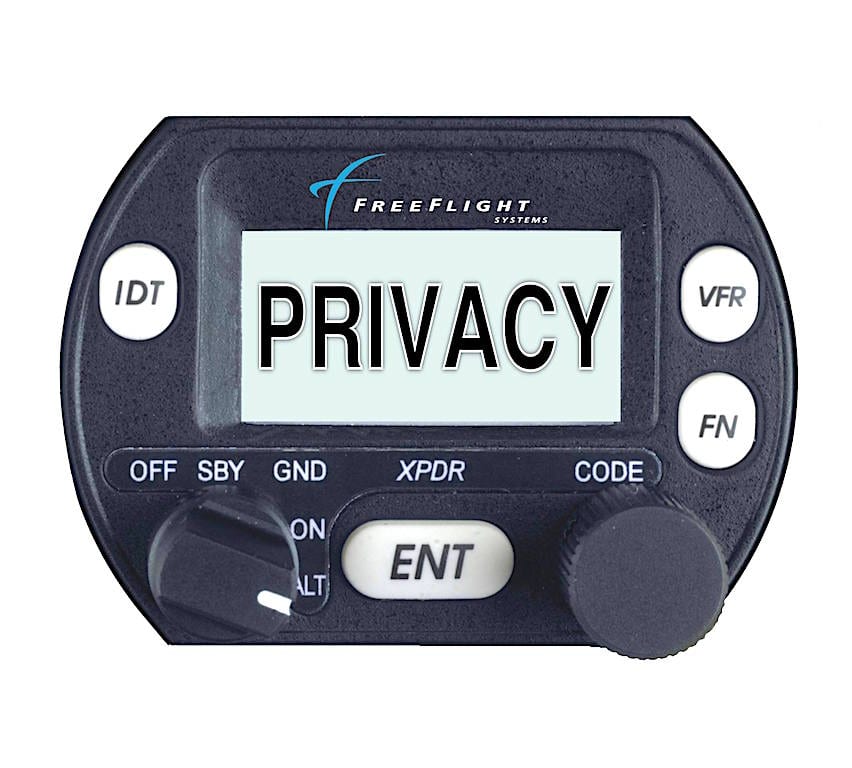
(Photo: FreeFlight Systems)
ORLANDO, Fla. — Automatic Dependent Surveillance Broadcast Out’s (ADS-B Out) ability to provide up-to-the-minute aircraft position and ownership information is still a concern for business and general aviation operators, according to a session that highlighted the issue during the 2022 NBAA Business Aviation Convention & Exhibition (NBAA-BACE).
The “Privacy in the ADS-B Era” education session at this year’s BACE featured a discussion about the issue some business and GA operators have with ADS-B that Avionics International has been covering for several years: Widely available, inexpensive ADS-B tracking equipment allows virtually anyone to track the flights of 1090 MHz ADS-B-equipped aircraft all over the world.
RELATED:
“It’s not a surprise this is such a big topic in our industry today,” Doug Carr, NBAA’s senior vice president of international affairs, said in highlights of the session released by NBAA.
“This is about a four-decade ongoing challenge,” Carr adds.
Arguably the most famous example of the ADS-B privacy concerns of business aviation operators has been the coverage by several mainstream media outlets of a Twitter account that uses ADS-B to track the movements of the jet owned by Elon Musk. In February, The New York Times published an article covering the account managed by a college student that uses an ADS-B-powered bot that tracks the movement of Musk’s Gulfstream G650ER.
@ElonJet is able to do that, because the jet owned by Musk—like all other private and commercial jets—has a 24-bit International Civil Aviation Organization (ICAO) address.
That address is assigned to an aircraft’s registration number and has historically been broadcasted by Mode S transponders installed on air transport category aircraft. With the FAA and most other civil aviation regulators now mandating the use of ADS-B Out transponders compatible with the ADS-B surveillance systems they’re using, that info is now broadcasted across ADS-B networks and available to ground-based ADS-B receivers.
Each aircraft’s assigned ICAO code is based on its registration and a public algorithm that makes the position of the aircraft publicly available. With enough effort and research, that means the ownership associated with those aircraft is usually available or easily discovered by non-air traffic controllers that have ADS-B receivers or use flight tracking applications and websites.
That can be a concern for some corporate flight departments that want to keep the movements of their aircraft—and the individual or company that might operate it—private.
“Aviation enthusiasts were starting to see they could fill in the gaps with their own technology to create air traffic networks independent of the FAA,” Carr says. “Now in 2022, we have robust, non-FAA networks publishing real-time information about air traffic.”
According to NBAA, the following four tools help operators mitigate this, including the following:
- Using a trust or LLC for aircraft ownership
- Participating in the Limited Aircraft Display Data (LADD) program
- Using a third-party call sign
- Participating in the Privacy ICAO Aircraft Address (PIA) program
However, as noted by Jens Hennig, vice president of operations for the General Aviation Manufacturers Association, those mitigations do not combine to provide a permanent fix.
“We can’t hide you forever,” Hennig said.
NBAA’s update on the ADS-B Privacy education session also notes that while in recent years these concerns have mainly been associated with U.S.-based operators, recent ICAO meetings have seen similar concerns expressed “on these security issues with many Gulf states bringing the discussion to the table.”
Check out the ADS-B privacy resources provided by NBAA here. The Federal Aviation Administration also has a web page dedicated to the issue.